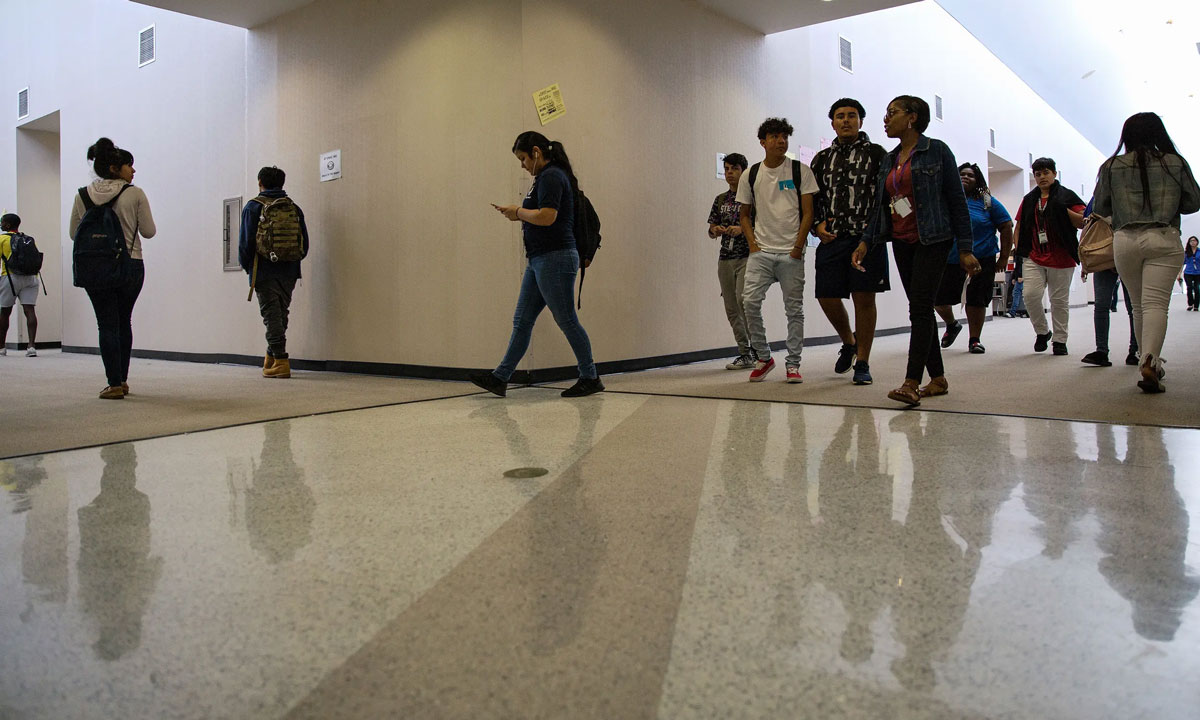Texas High School Students’ Math Scores Are Still Lagging, STAAR Results Show
Algebra scores have not recovered since the pandemic, raising worries about students’ readiness for STEM-related jobs.

Get stories like these delivered straight to your inbox. Sign up for The 74 Newsletter
Partial scores from the state’s standardized test released Friday show high school students are still struggling with algebra, once again raising concerns about young Texans’ readiness to enter high-paying careers in STEM-related fields.
The State of Texas Assessments of Academic Readiness end-of-course tests evaluate high-schoolers in five subjects: Algebra I, Biology, English I, English II and U.S. History. The exams gauge whether students’ grasp of a subject is appropriate for their grade level and if they need additional help to catch up.
The percentage of students who took the test this spring and met grade level for Algebra I was 45%, the same as last year. Since the pandemic, students’ academic performance in the subject has remained mostly unchanged. The latest results are still 17 percentage points below students’ scores in spring 2019.
“The data is clear, Texas students continue to struggle with math recovery,” said Gabe Grantham, policy advisor at public policy think tank Texas 2036. “We run the risk of leaving students ill-equipped to enter the future workforce without the basic math skills needed to be successful.”
Education policy analysts closely observe Algebra I results because a wealth of research links the subject to students’ future success in their careers after high school. Kate Greer, the managing director of policy at The Commit Partnership, said STAAR test scores allow researchers to delve into districts that performed better than the state average and form concrete policy proposals to help improve math scores.
“We are still underperforming compared to where we were pre-pandemic, so it is incumbent on us as a state to collectively focus on what we know works,” Greer said. “The value of assessments is it can focus adult behavior, shine a flashlight on opportunities where we can improve more and highlight best practices when we’re seeing impressive growth.”
However, in the past few years, high schoolers have consistently scored better on their English tests since the pandemic. Emergent bilingual students, or students who are learning English as a second language, have steadily performed better on the English I and II tests. The percentage of emergent bilingual students who met grade level went from 12% in 2019 to 30% this spring.
Test results for U.S. history and biology still lag behind pre-pandemic levels, but they are much closer to catching up than in math.
Across all five subjects, low-income students graded lower than students who were not economically disadvantaged. For example, 35% of low-income students met grade level in Algebra I, compared to 61% of all other students.
In a push to improve math skills, the Texas Legislature last year passed Senate Bill 2124, which automatically puts middle schoolers into a higher math class if they do well in previous courses. Lt. Gov. Dan Patrick included reading and math readiness on his list of interim priorities, suggesting that lawmakers will revisit the issue during next year’s legislative session.
Disclosure: Commit Partnership and Texas 2036 have been financial supporters of The Texas Tribune, a nonprofit, nonpartisan news organization that is funded in part by donations from members, foundations and corporate sponsors. Financial supporters play no role in the Tribune’s journalism. Find a complete list of them here.
This article originally appeared in The Texas Tribune at https://www.texastribune.org/2024/06/07/texas-staar-scores-math-algebra/.
The Texas Tribune is a member-supported, nonpartisan newsroom informing and engaging Texans on state politics and policy. Learn more at texastribune.org.
Get stories like these delivered straight to your inbox. Sign up for The 74 Newsletter

